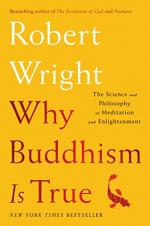|
This section contains 1,065 words (approx. 3 pages at 400 words per page) |

|
Summary
A man named Fred, suffering from Capgras delusion, was convinced that his wife was not with him when she was. Though he recognized her physical appearance, he thought that she was an imposter without the essence of his wife. Though this may sound like Buddhist emptiness, Wright warns, this is far from it. Fred does not dismiss an illusion, he gains a delusion.
At the same time, this does have a certain connection to Buddhism. In the Capgras delusion, perhaps the connection between the visual processing part of the brain and the emotional part of the brain is disrupted. Thus, someone can look like a loved one, but not evoke familiar feelings of love. The act of identifying someone is no longer a simply cognitive act, it is affective as well.
Here, Wright recalls a psychologist Bloom’s writings on essentialism...
(read more from the The Upside of Emptiness Summary)
|
This section contains 1,065 words (approx. 3 pages at 400 words per page) |

|




